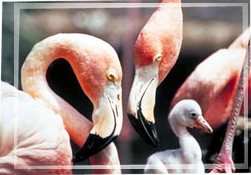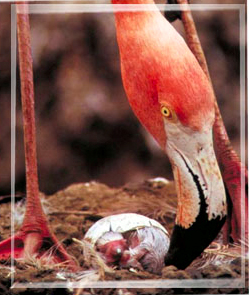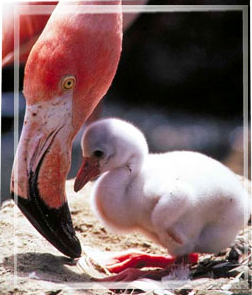Incubation begins soon after the egg is laid. The incubation period is between 27 and 31 days.
Both the male and female take turns incubating the egg by sitting on top of the nest mound.

- During incubation, flamingos will stand, stretch their wings, and preen themselves frequently.
- A parent bird carefully lifts and turns the egg with its bill.
Eggs that fall from the nesting mound are not retrieved.
HATCHING
Hatching takes between 24 and 36 hours.

Hatching can take between 24 and 36 hours, during which the chick calls frequently and the parents respond anxiously.
The chick calls frequently as it breaks out of the shell.
The chick breaks through the shell using a growth on its bill called an “egg tooth”. The egg tooth is not a true tooth and falls off soon after the chick hatches.
Flamingo parents appear anxious while their chick is hatching. They stand, look at the egg, and vocalize.
The adult stands, looks down, and gently preens and nibbles at the emerging chick.
CHICK AT HATCHING
Newly-hatched chicks have gray or white down feathers, a straight red bill, and plump, swollen red or pink legs.
The leg swelling decreases approximately 48 hours after hatching, and the red bill and legs turn black in seven to ten days.
After hatching, a flamingo chick is not very agile. Movement is limited to pushing its wings or lifting its head.

Flamingos are attentive parents.


